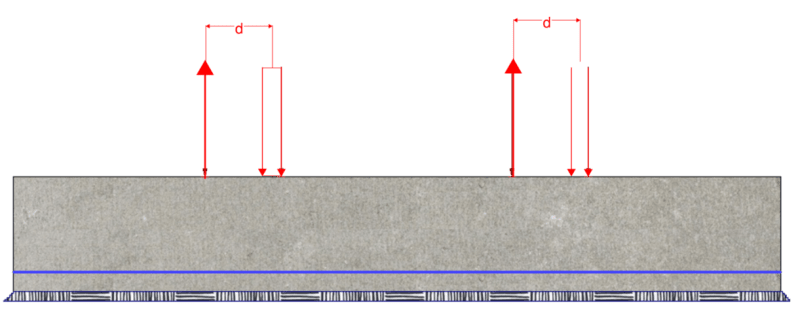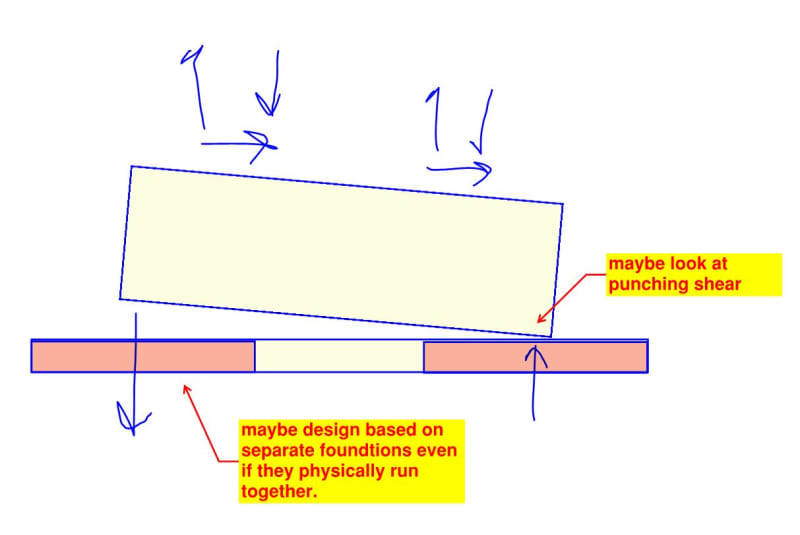I got a theoretical question about applying OTM, resulting from a wood shear wall analysis, to the top of a footing modeled as a beam on elastic foundation.
Is it better to apply these moments as single point loads? Or is it best to decouple the moment so you have a local tension force and a short bearing compression force?
For my given scenario, I've got two shear walls on the same foundation. The footings are required to be long enough that they will encroach into each others footprint. So I'm placing these two walls on a single foundations. Applying two point load moments works. However, decoupling the moment creates instability in the footing kern and I feel that it's likely due to an "artificial" uplift. I say artificial, but in reality, I will need to check my anchor bolts for this local force... so it's a reality for local forces. I'm not sure if what I'm saying here is making sense.
Drawings below are not to scale.


Side note: If you only have (1) moment placed concentrically on the footing, your bearing pressure will decrease as you decouple the moment and spread the load out concentrically over it's moment arm. Things go wonky when the loads are eccentric, or if you have two loads with varying magnitudes.
Is it better to apply these moments as single point loads? Or is it best to decouple the moment so you have a local tension force and a short bearing compression force?
For my given scenario, I've got two shear walls on the same foundation. The footings are required to be long enough that they will encroach into each others footprint. So I'm placing these two walls on a single foundations. Applying two point load moments works. However, decoupling the moment creates instability in the footing kern and I feel that it's likely due to an "artificial" uplift. I say artificial, but in reality, I will need to check my anchor bolts for this local force... so it's a reality for local forces. I'm not sure if what I'm saying here is making sense.
Drawings below are not to scale.


Side note: If you only have (1) moment placed concentrically on the footing, your bearing pressure will decrease as you decouple the moment and spread the load out concentrically over it's moment arm. Things go wonky when the loads are eccentric, or if you have two loads with varying magnitudes.

